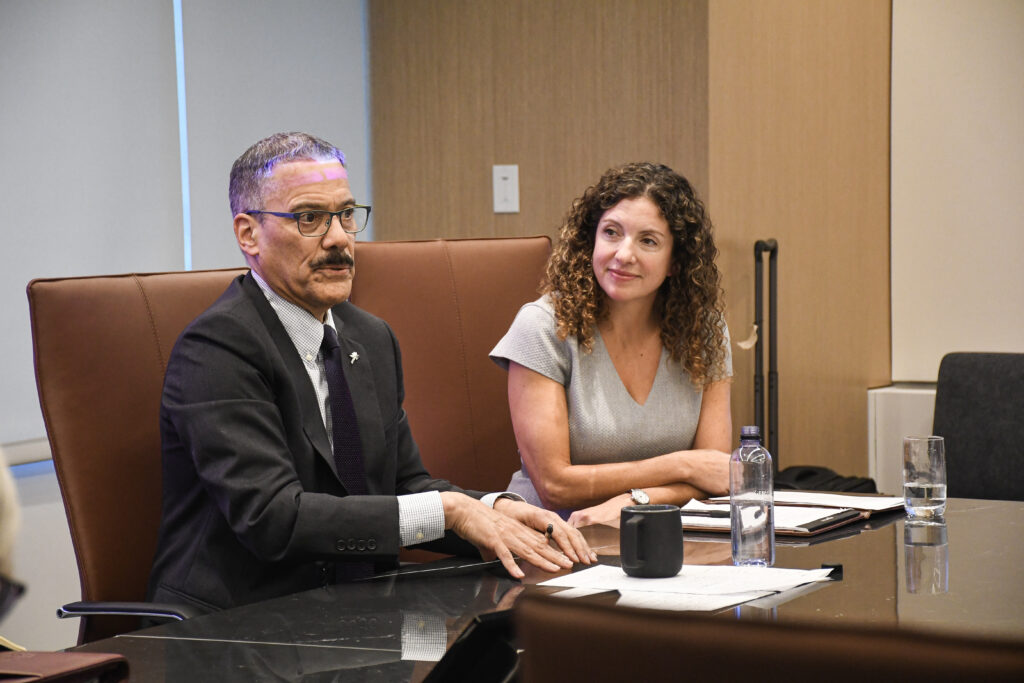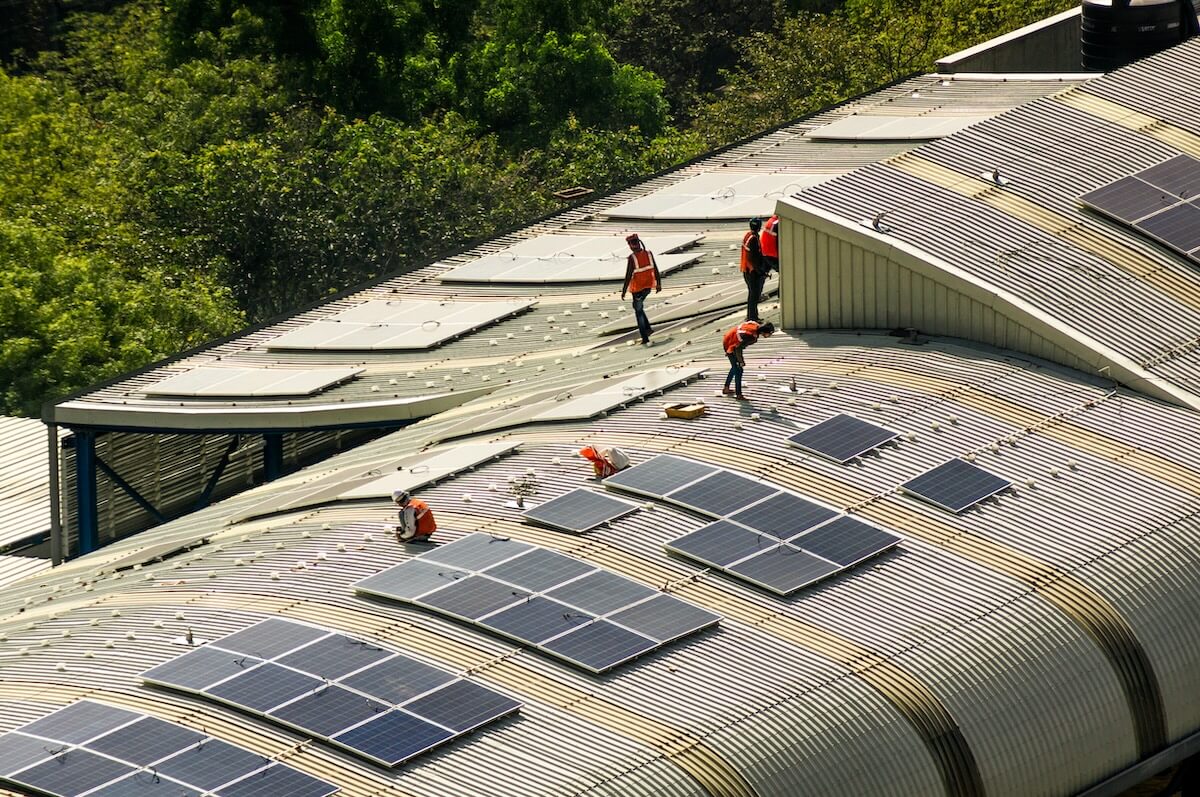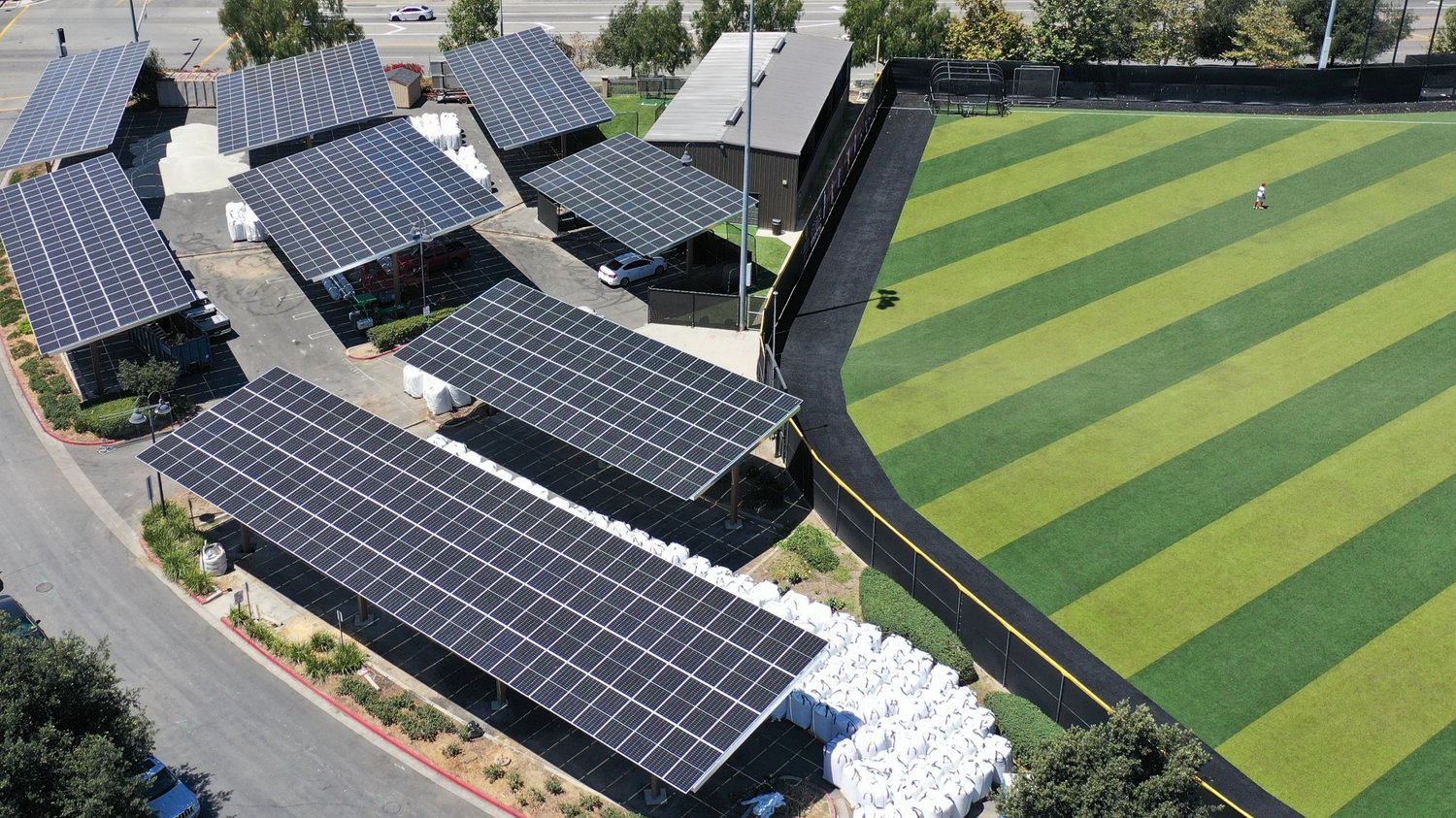ImpactAlpha, September 21 — Hard choices have to be made… about which of the hundreds of Climate Week NYC events to attend.
As the rain gave way to sunny skies, so did the gloomy outlook from the United Nations and its less-than-ambitious Climate Ambition Summit. The brighter outlook was palpable all over town among the entrepreneurs, investors, policymakers and experts chomping at the bit to drive the zero-carbon transition.
In addition to technological advances and declining cost curves, this year’s Climate Week is powered by policy tailwinds.
But no sooner had the historic Inflation Reduction Act and infrastructure-bill funding started flowing than worries have emerged about a rollback in the event of a Republican win in 2024. Not so fast. Not only were the laws crafted specifically to make them hard to rewind, some climate investors and experts said, but they have been politics-proofed: the bulk of the factories and jobs are being created in red, or Republican-led, states.
The law’s tax incentives have helped boost fledgling business models. “The IRA effectively added an extra line item of revenue,” said Josh Santos of direct air capture startup Noya at a session at Union Square Ventures.
And as in Texas, even Republicans realize renewables are just good business (see, “Don’t mess with Texas’s lead in the low-carbon energy transition”). The market momentum and climate imperative is greater than any policy headwinds or tailwinds, says Scott Jacobs of green infrastructure developer Generate Capital. The IRA incentives, which are still being finalized, have yet to filter into Generate’s economic calculus.
“We’re making more money on sustainability than people are making on unsustainability,” Jacobs told ImpactAlpha.
ImpactAlpha contributor Robert Eccles, who this week traced the five narratives of climate change discourse, worked out a kind of cross-partisan roadmap for institutional investors with John Skjervem, chief investment officer of the $50 billion Utah Retirement Systems pension plan.
“This one is grounded in Scientific with a heavy helping of Opportunity, laced with Skeptical for some current approaches, and with a dash of Moral and Doomsday,” Eccles says.
Green banking competition
Connecticut’s green bank, one of the nation’s first, provides a glimpse into what’s possible once the IRA’s Greenhouse Gas Reduction Fund is up and running.
Last month, the Connecticut bank, with ImpactAssets and Inclusive Prosperity Capital, lent PosiGen $12 million to install rooftop solar panels and make energy efficiency upgrades for low-income households. The Connecticut Green Bank has mobilized roughly $2.4 billion in clean energy investments since 2011, with $350 million in public funding.
The Green Bank Network and the Natural Resources Defense Council, or NRDC, on Wednesday convened erstwhile competitors to rally collaborative approaches to deploy the Greenhouse Gas Reduction Fund. A total of $27 billion can go to state green banks, CDFIs and other community-based lenders to catalyze private capital for hard-to-finance decarbonization, clean energy and other green infrastructure projects.
“If we’re going to equitably reach our climate goals, we can’t work in silos,” said NRDC’s Adam Ken at the Climate Week event.
New York’s green bank, a division of the New York State Energy Research and Development Authority, or NYSERDA, has applied under each of the fund’s three programs, NY Green Bank’s David Davenport said. That includes the $14 billion National Clean Investment Fund, the $6 billion Clean Communities Investment Accelerator, and the $7 billion Solar for All grant competition.
In April, NY Green Bank launched a $250 million Community Decarbonization Fund, which Davenport called “a wholesale lending pathway” for low-cost capital for CDFIs and other lenders to clean energy, building electrification and other projects.
The DC Green Bank made a $2 million loan to woman-led Flywheel Development for seven community solar installations in Washington, DC. “We were able to reduce energy burdens for over a dozen low- and moderate-income district families,” says DC Green Bank’s Trisha Miller. Flywheel is bringing together 10 women-owned businesses to create 35 construction and over 20 permanent jobs to communities of color, she said.
“Women in the renewable energy sector, we’re still only at just under 30%,” Miller said. “So it’s about gender equity, it’s about leading with communities of color and underserved communities.”

Green talent pipeline
A new “climate corps” launched by the Biden administration could make at least a minor dent in the skills shortage that is threatening the full deployment of IRA funding.
The IRA has already created some 170,000 jobs, but a skills gap is holding back more hiring. “Increasing demand for green skills is far outpacing the supply,” said LinkedIn’s Tammy Erickson at an event hosted by Elemental Excelerator. “We all need to lock arms and get more folks skilled and working in this space.”
Demand for green jobs surged 20% last year, but talent with matching skills grew by less than half that rate, according to LinkedIn. By 2030, some 24 million jobs worldwide could be created by the green economy.
The new American Climate Corps invests in job training and aims to put more than 20,000 Americans to work in green jobs. That includes 13,000 participants in pre-apprenticeship readiness programs organized by the non-profit TradesFutures. Another 5,000 positions, or an increase of 30%, will be added to the Indian Youth Service Corps to train the “next generation of conservation and climate stewards” for Indian Country. AmeriCorps and the U.S. Forest Service will engage 80 young people in a new Forest Corps to work on fire prevention, reforestation, and resource management projects.
EDICT, an internship program led by Clean Energy Leadership Institute, Elemental Excelerator, and FutureMap, is helping to diversify the talent pipeline for green jobs.
What’s in a name?
In Washington, DC, the Securities and Exchange Commission adopted new rules to fight greenwashing, by barring the misleading use of ESG terms in mutual fund names. The rules follow a similar labeling regime in the EU, which has helped shrink the number of funds claiming they are sustainable or ESG.
“This will be one important step towards ensuring the ESG and impact investing markets continue to grow with integrity,” Fran Seegull of the US Impact Investing Alliance said in a statement. “We also encourage the SEC to move swiftly to address other critical items on its disclosure agenda, like human capital management and climate disclosure.”











